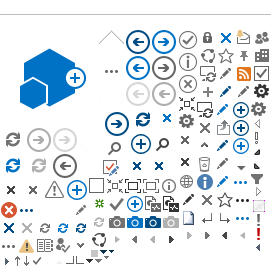<p><span style="font-family: helvetica;"><img src="/nairobi/PublishingImages/J%20Arot%20body%20image.jpg" alt="" style="margin: 5px;"/>
</span></p><p><span style="font-family: helvetica;">By the time Jenifer Maraka Arot arrived at the Aga Khan University Hospital in Nairobi, her life was hanging by a thread.</span></p><p><span style="font-family: helvetica;">The 36-year-old mother of six had spent over two years battling unexplained fatigue and searing chest pains - symptoms that had slowly robbed her of her strength and her ability to serve her community. A village administration officer in Turkana County, Kenya's largest and most remote region, Jenifer was used to long treks across arid villages, resolving disputes and linking residents with government services.</span></p><p><span style="font-family: helvetica;">But by May 2023, her body began to betray her. “I couldn't walk far. The pain in my chest and back would take a toll on me," she recalls.</span></p><p><strong style="font-family: helvetica;">A Journey Through Misdiagnosis and Misunderstanding</strong></p><p><span style="font-family: helvetica;">Her first stop was the Turkana County Referral Hospital in Lodwar. An x-ray was done, but the results were unclear. Doctors suspected pneumonia and put her on medication. Two weeks later -with no improvement and pain still raging - she returned. This time, she was told to do a CT scan. But there was a problem: Turkana County doesn't have a single CT scanner.</span></p><p><span style="font-family: helvetica;">Determined to find answers, Jenifer did a CT Scan in in December 2024, at St. Luke's Hospital, which revealed she had a descending aortic aneurysm - a rare and life-threatening condition in which a section of the aorta (the body's main artery) balloons dangerously. If it ruptured, it would be fatal.</span></p><p><span style="font-family: helvetica;">She was advised to seek specialized care in Nairobi, particularly at Karen Hospital. She had to travel for 13 hours by road while in pain covering a distance of 670 kilometers to Nairobi where her husband lived working as a civil servant.</span></p><p><strong style="font-family: helvetica;">A Timely Encounter with Life-Saving Doctors</strong></p><p><span style="font-family: helvetica;">They headed to Aga Khan University Hospital (AKUH), where Jenifer met Dr. Grace Muthoni in the Emergency Department. A second CT scan revealed a terrifying development—the aneurysm had grown from 5.3 cm to 7.8 cm in just four weeks. Immediate action was needed.</span></p><p><span style="font-family: helvetica;">Dr. Muthoni called in Dr. Joseph Ruturi, a renowned Vascular and Cardiothoracic Surgeon, who recommended urgent admission. Her condition was now critical.</span></p><p><span style="font-family: helvetica;">Thanks to insurance, Jenifer was admitted to the High Dependency Unit for close monitoring. But there was another hurdle: to save her life, doctors needed a stent from Europe -costing KSh 3.5 million. Combined with the procedure and hospital care, the total bill would soar past KSh 6 million an amount too far for them to afford.</span></p><p><span style="font-family: helvetica;">Her insurance could only cover half.</span></p><p><strong style="font-family: helvetica;">Hope When All Seemed Lost</strong></p><p><span style="font-family: helvetica;">As Jenifer's condition deteriorated, her family faced a financial cliff. “I thought money would be the reason I die," she says. But then, a lifeline came: the AKUH Patient Welfare Programme assessed her case and offered to cover a significant portion of the costs.</span></p><p><span style="font-family: helvetica;">With this support, the hospital ordered the stent. For 35 anxious days, Jenifer remained under intensive care, her medical bill quietly climbing past KSh 1 million.</span></p><p><strong style="font-family: helvetica;">Surgery and a Second Chance at Life</strong></p><p><span style="font-family: helvetica;">On March 7th, she was wheeled into surgery. A four-hour operation gave her a second shot at life. When she woke up in the ICU at 5 p.m., she was overwhelmed with relief. The pain was gone—and the aneurysm had been successfully repaired.</span></p><p><span style="font-family: helvetica;">After a day in ICU, five more in HDU, and further recovery in the surgical ward, Jenifer was discharged.</span></p><p><span style="font-family: helvetica;">Now, two months post-surgery, she's pain-free, doing household chores, and preparing to return to her job in June. Her final follow-up is scheduled for the end of May 2025.</span></p><p><strong style="font-family: helvetica;">A Message of Gratitude and Hope</strong></p><p><span style="font-family: helvetica;">“I never thought someone from Turkana—someone like me—could access this level of care," Jenifer says. “But Aga Khan University Hospital and its Patient Welfare Programme showed me that quality healthcare is not just for the wealthy. They gave me my life back."</span></p><p><span style="font-family: helvetica;">She remains deeply grateful to the team of doctors, nurses, and support staff who stood by her during her darkest hours. “AKUH restored my life—and gave me a future with my children."
</span></p>
